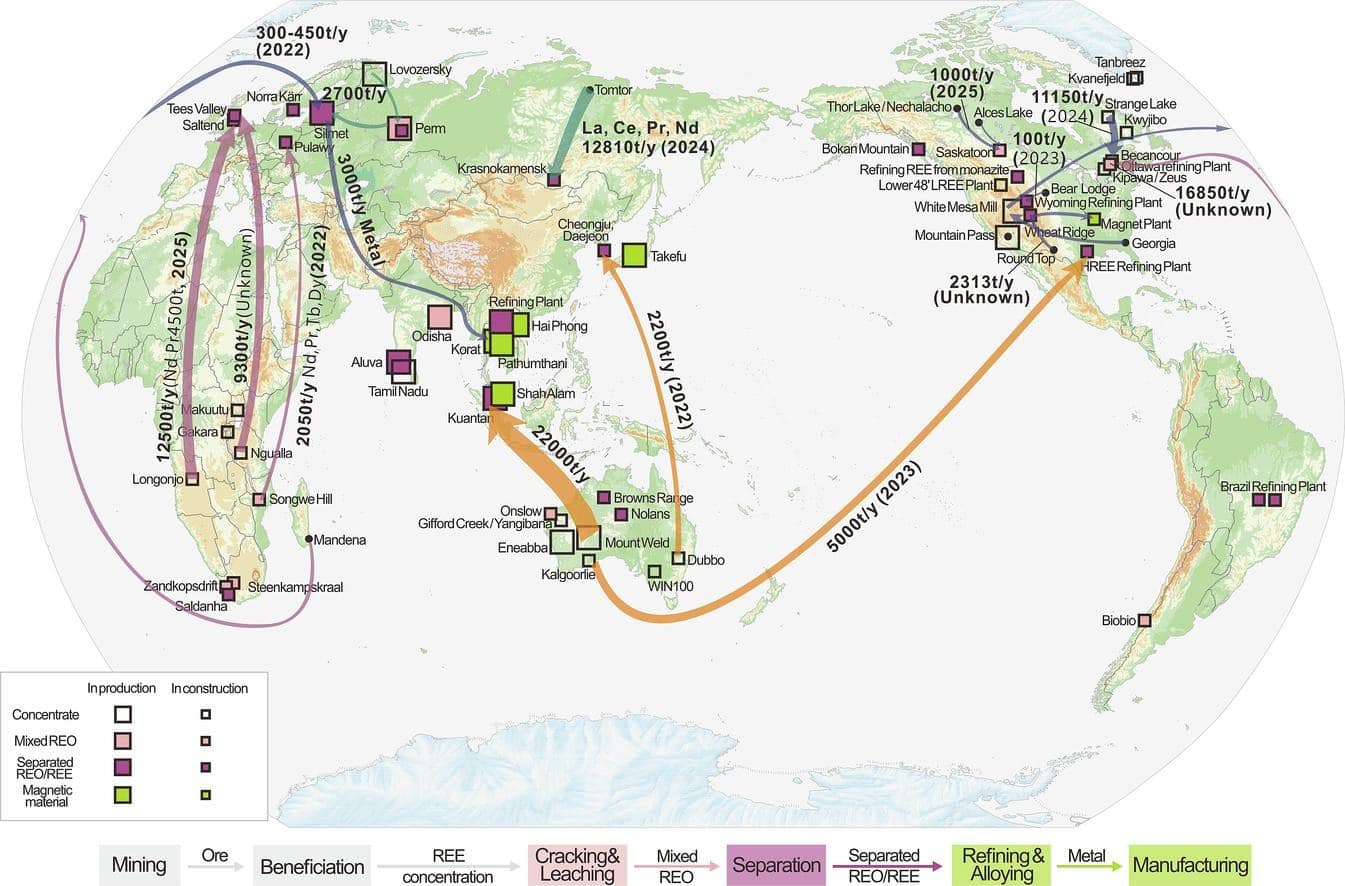Hightlights
- Chinese study on rare earth projects reveals global supply chain changes.
- New REE database is available for download.
- Carbonatite deposits to dominate exploration.
Chinese academics are intently studying the forces at work transforming the rare earth element industry. Last year, a team represented by Hongrui Fan, Institute of Geology and Geophysics, Chinese Academy of Sciences in Beijing sought to better understand both ongoing or imminent rare earth elements projects around the world as well as new developments in the field, and the implications for supply chain disruption.
Published in the peer-reviewed journal Ore Geology Reviews (opens in a new tab), the authors first and foremost acknowledge the criticality of rare earth elements (REE), “key enablers for the ongoing energy and environmental transition as they are critical raw materials in many low-carbon technologies.”
With an accumulation of new REE projects worldwide, a replenishing market force, the Chinese scientists acknowledge is “changing the supply chains.” Of course, this means a threat to the existing industry order, which China has predominated for decades.
Enter a new REE project database developed thanks to this Chinese funded study. Specifically, the following players are behind this REE project database:
National Natural Science Foundation of China (opens in a new tab)
The Traceability of Primary Mineral Resources and Recovery and Recycling of Secondary Mineral Resources
The Key Research Program of the Institute of Geology and Geophysics, CAS (opens in a new tab)
Enter this new REE database, inclusive of projects, along with detailed information sources. The database is available for download and includes REE projects and processing and factory initiatives.
As of June 2023, according to this Beijing-based scan there are at least “146 advanced and mining projects, involving over 303.4 million tons of rare earth oxides around the world and some newly designed supply chains.”
Interestingly, Hongrui Fan and colleagues report that the main source of action is carbonatite type deposits—this class of activity will more than likely dominate future targets for exploration and mining.
While Asia continues to represent the predominant source of REE, Greenland, Africa, and Europe emerge as key players, assuming the issues involving environmental and processing technologies are well addressed.
The authors of this study also estimate the value of these rare earth projects in terms of estimated value and heavy rare earth elements resources amounts. They also list select REE deposits deserving more attention based on this new database.
Go to Ore Geology Reviews (opens in a new tab) and download the spreadsheet:


Daniel
You Might Also Like…